Twice the fun awaits at Southbridge Wilmington lands Park

nership for the Delaware Estuary is hosting two vities with the City of Wilmington at the Southbridge mington Wetlands Park East Entrance at the section of A and Church streets. These activities e residents to get to know their park better
egistration is necessary, just come and have a t time Questions? Contact od@delawareestuaryorg
Twilight on the Trail: 5-7 p.m., Thursday, May 30
This event is for nature lovers or anyone who is new to nature. Youth Trail Ambassadors from Delaware Nature Society will lead family-friendly activities to learn more about the marsh and its wildlife There will also be snacks and plant giveaways
Party in the Park: 1-4 p.m., Sunday, June 2
This event will include free activities for families, including games, nature activities, picnic foods, music, and meetings with local community organizations
About The Park
Southbridge Wilmington Wetlands Park is an award-winning model green space and green stormwater infrastructure project. Opened in October 2022, the park is a restored wetland with many native plants that provide habitat for birds, fish, and other aquatic wildlife In addition to being an urban green space for residents to enjoy, Southbridge Wilmington Wetlands Park is a nature-based solution to combat flooding that has plagued the Southbridge neighborhood. Stormwater that would normally inundate the city sewer system and flood streets and homes is now directed to the wetland, which manages the floodwater, moving it into the adjacent Christina River. Since the opening, plans to enlarge the restored wetlands area (and its stormwater holding capacity) have been underway and are expected to finish in 2026
Where is the park?
Southbridge Wilmington Wetlands Park is bordered by A Street, Walnut Street, and Garasches Lane in South Wilmington. Both events will be located at the park’s east entrance off A Street by the turf fields
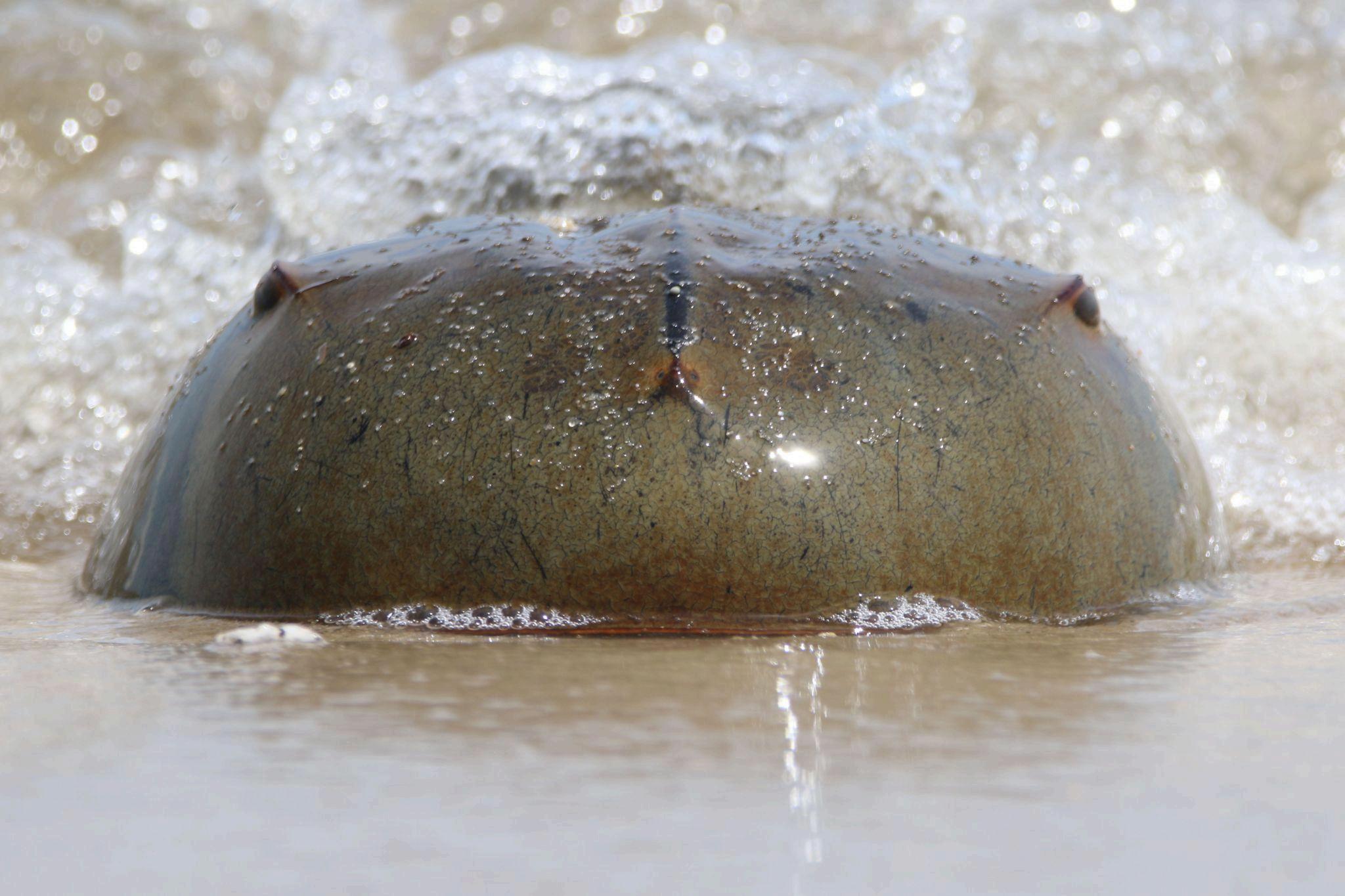
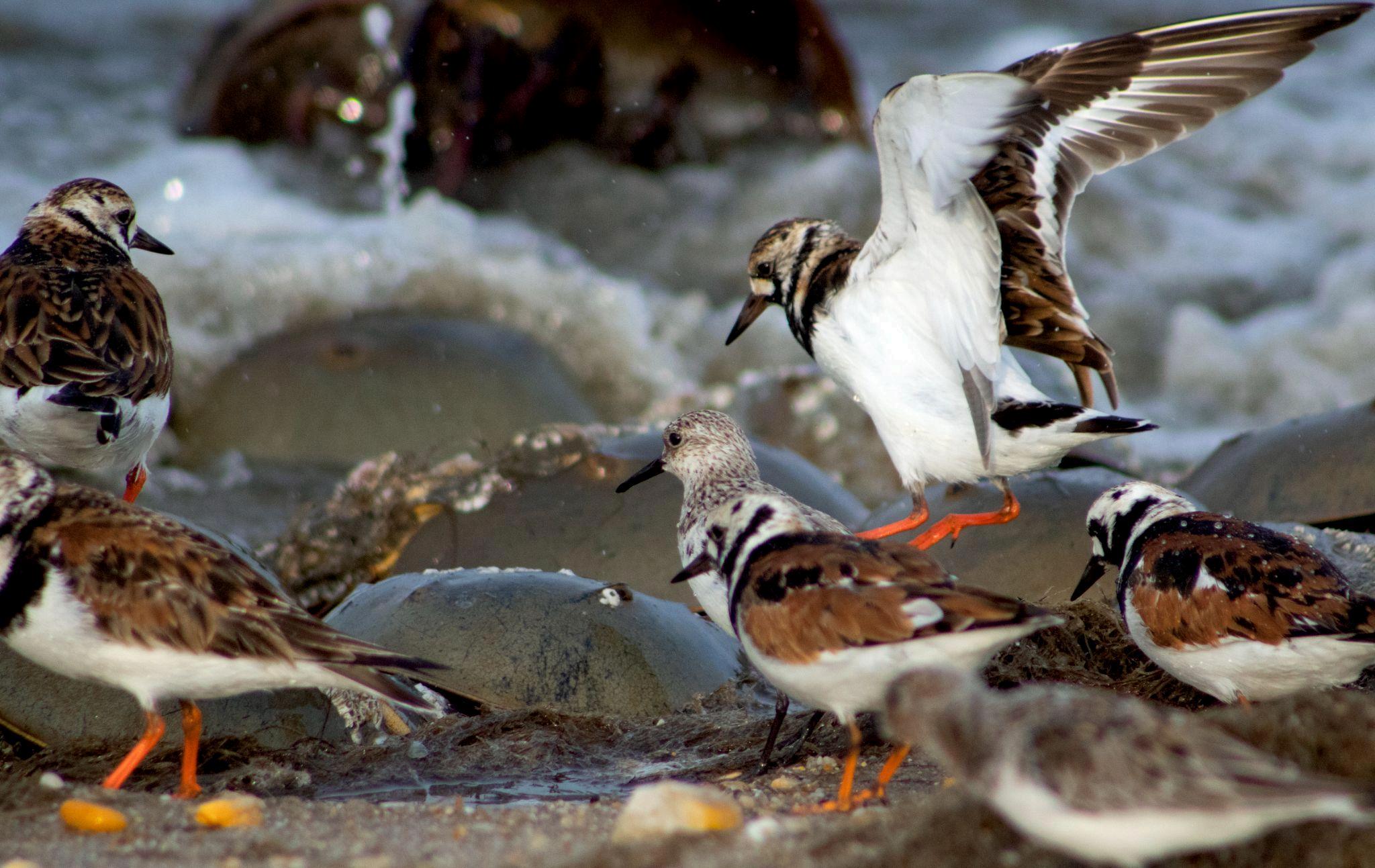
Get in Touch with Nature this Spring and Summer
In May and June, as the waters of the Delaware Bay gets warmer, the humble Atlantic horseshoe crab (Limulus polyphemus) emerges from the Delaware Bay to breed and lay eggs in the sand
Horseshoe crabs are ancient creatures predating the dinosaurs Because of their longevity, horseshoe crabs are often referred to as living fossils.
Beaches along the Delaware Bay in Delaware and New Jersey are great places to see the crabs in action If you’re lucky, you might even spot migrating shorebirds such as red knots and ruddy turnstones, as the Delaware Bay shores are critical resting places for the birds The birds feed on insects and nutrient-rich horseshoe crab eggs to give them the strength to continue their flights around the world, including the Arctic
Visit https://dnrec delaware gov/fish-wildlife/education-outreach/dupont-nature-center/horseshoe-cra bs-and-shorebirds/ for information about viewing horseshoe crabs in Delaware.
Visit https://returnthefavornj org/where-and-when/ for information about viewing horseshoe crabs in New Jersey.
For more information about horseshoe crabs and their connection to shorebirds, visit delawareestuary.org/soe23/animals and https://wwwnj gov/drbc/basin/living/horseshoe-crabs html
Photo Captions:
Top: A horseshoe crab sits in the surf of the Delaware Bay in Slaughter Beach, Delaware.
Bottom: Ruddy turnstones, which are migrating shorebirds, flock around horseshoe crabs in the Delaware Bay
From the Field
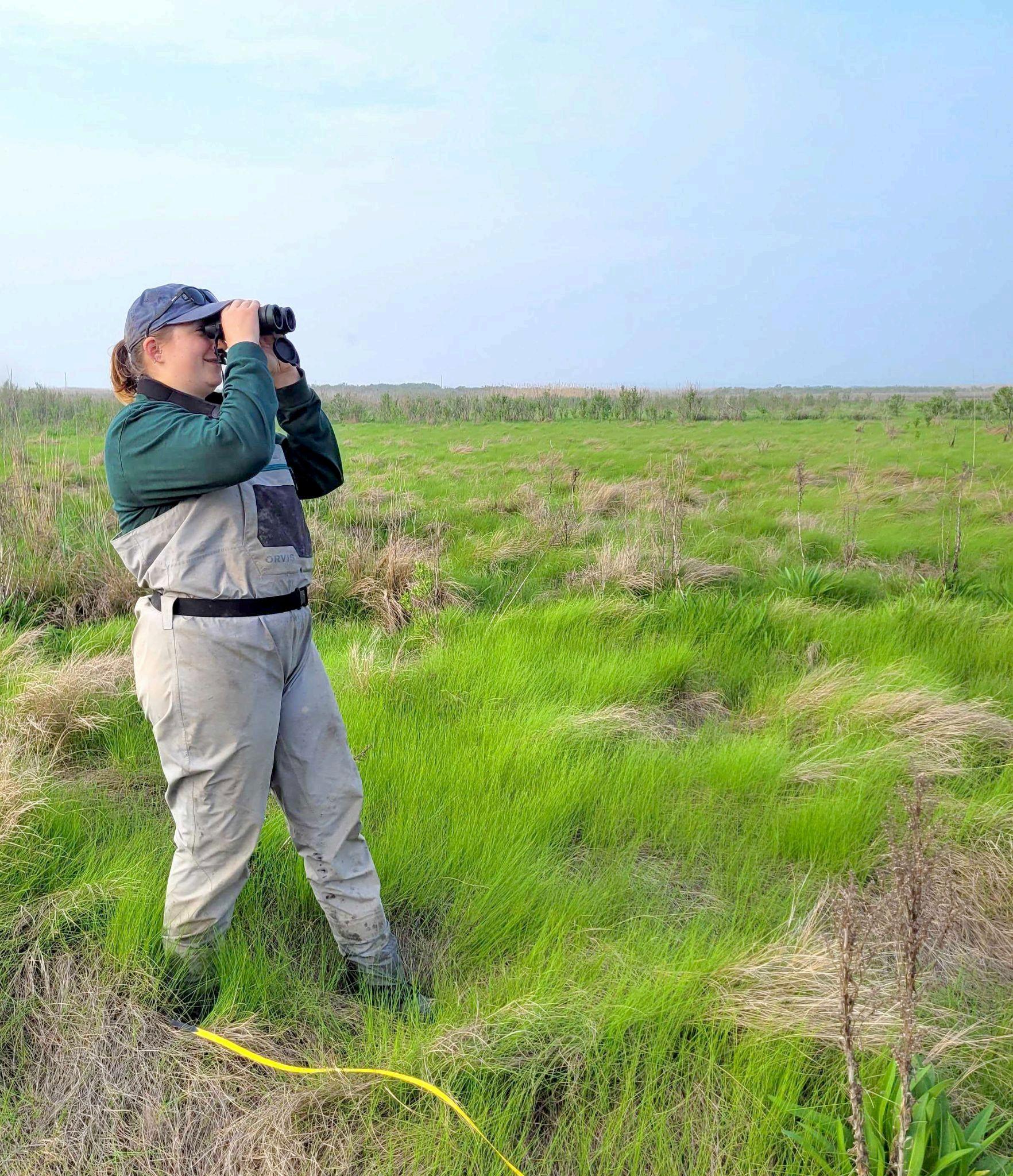
Fieldwork has taken our science squad all over the Delaware Estuary lately
Recently, we conducted bird surveys at Port Mahon, Delaware Marshland in this area of the Delaware Bay will soon undergo restoration, so we’re doing before-and-after assessments of bird sounds to see how the soundscape changes
Caption: PDE’s Restoration Specialist Jecy Klinkham scopes out the area where PDE is in the process of conducting bird surveys in Port Mahon, Delaware
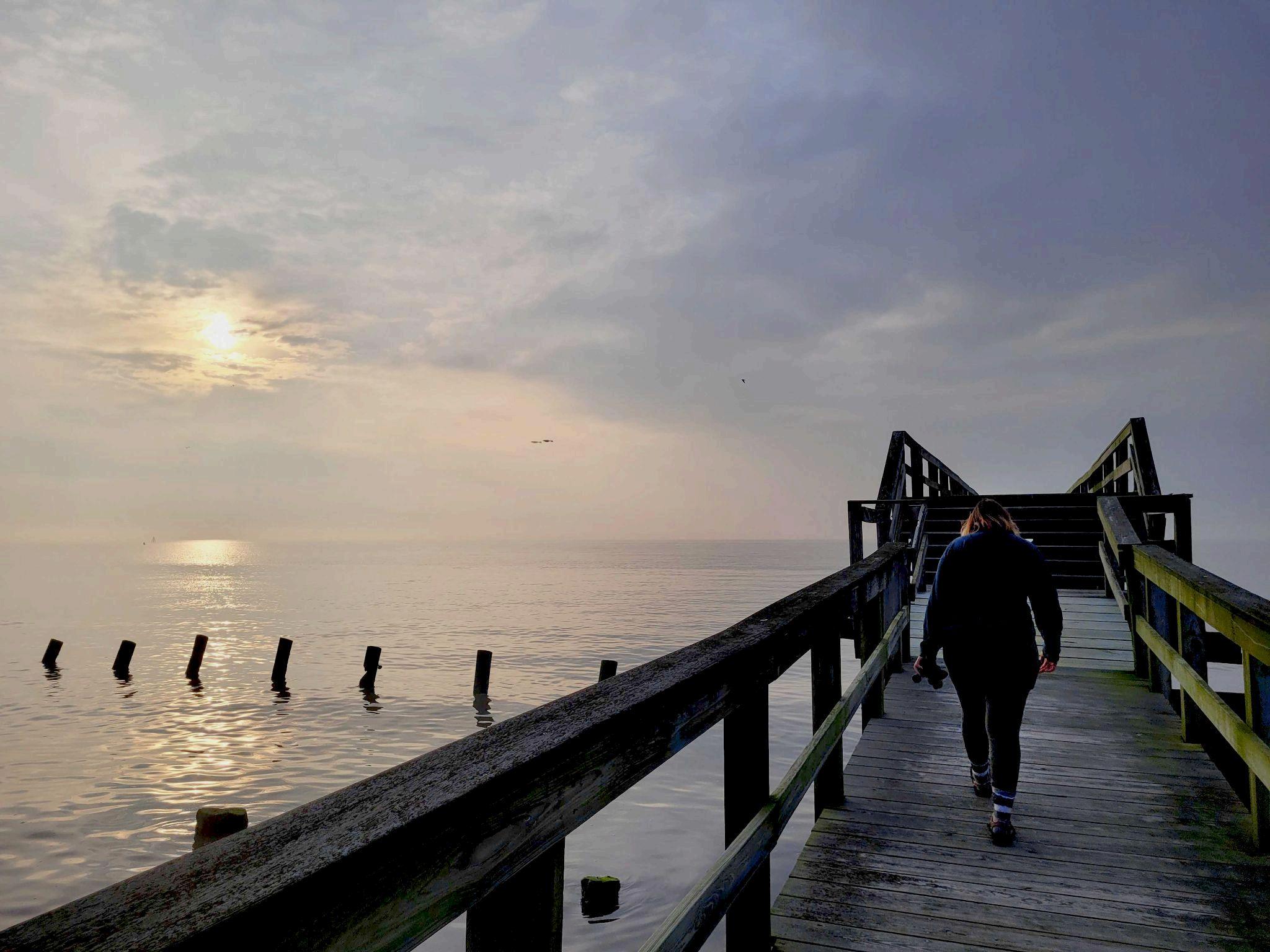
Caption: Early birds get a good sunrise Klinkham walks along the fishing dock at Port Mahon in Delaware.
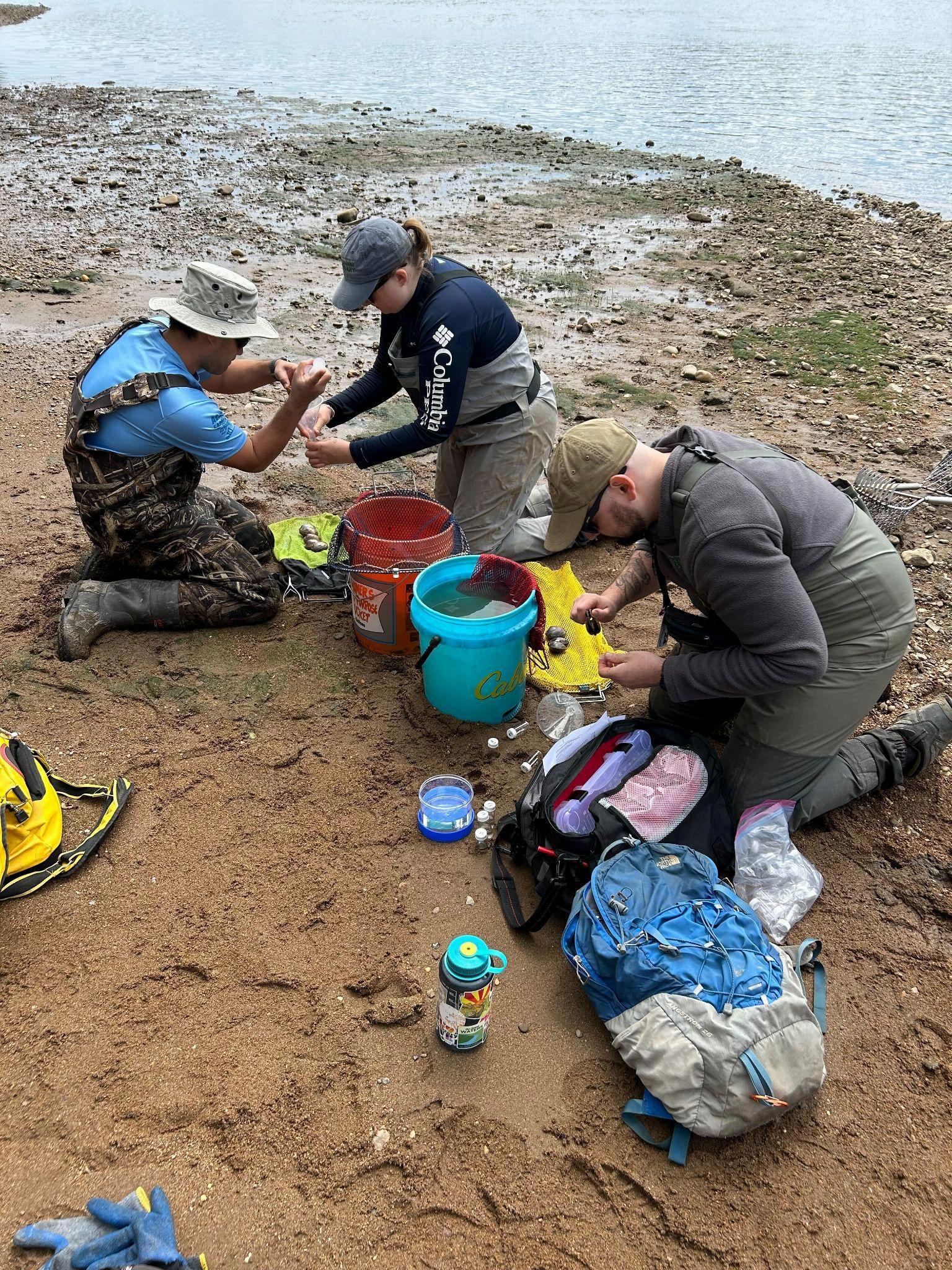
We’ve also been doing a lot of work with mussels Since April, some of our science crew has been monitoring wild freshwater mussel gravidity near the Delaware River in Bucks County, Pennsylvania. The gravidity checks are to see which female mussels are carrying larvae, and an important part of the process of studying the mussel life cycle and their population. The checks will carry through June
Caption: Members of the PDE science team check freshwater mussels by the banks of the Delaware River to see which female mussels are carrying larvae
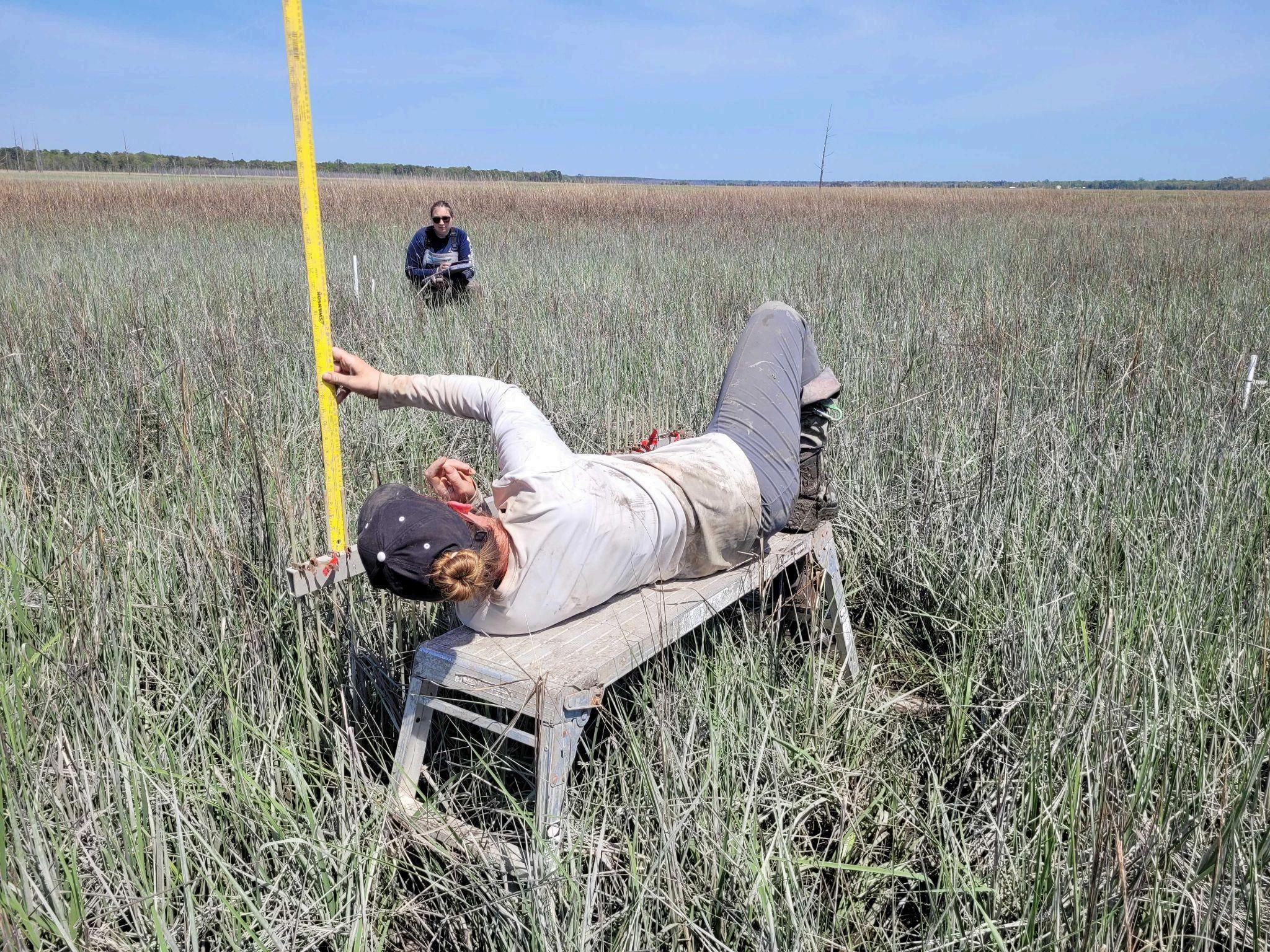
In New Jersey, we took to the marshes to monitor changes in marsh elevation
Gathering marsh elevation data every year gives us insight into how marsh elevation is faring relative to sea level rise
We use a couple of methods to collect the information we need We use surface elevation tables which help us see small height changes. We also utilize marker horizons, which consist of intentionally placed layers of feldspar to track the accumulation of new sediment and changes in elevation over time
PDE has been collecting this data from various marshes in New Jersey and Delaware for over a decade This data helps us understand how marshes are dealing with rising sea levels and set goals for restoring the area
Caption: PDE’s Assistant Director of Estuary Science LeeAnn Haaf, Ph D , checks elevation readings in a New Jersey marsh
Picking Up After Your Pooch is Pawsitively a Big Deal

Dog waste, when not properly disposed of, poses a significant threat to our environment, particularly to local water quality While most dog owners do the right thing and pick up after their pup, many, unfortunately, do not. They may not understand the connection between dog waste and water quality or realize that this small act can have a big environmental impact.
Together, the Philadelphia Water Department and the Partnership for the Delaware Estuary aim to educate Philadelphia pet owners about this important connection. We want to share continual reminders that picking up after your pup isn’t just the right thing to do, but it also helps to lessen our cumulative impact on local waterways.
